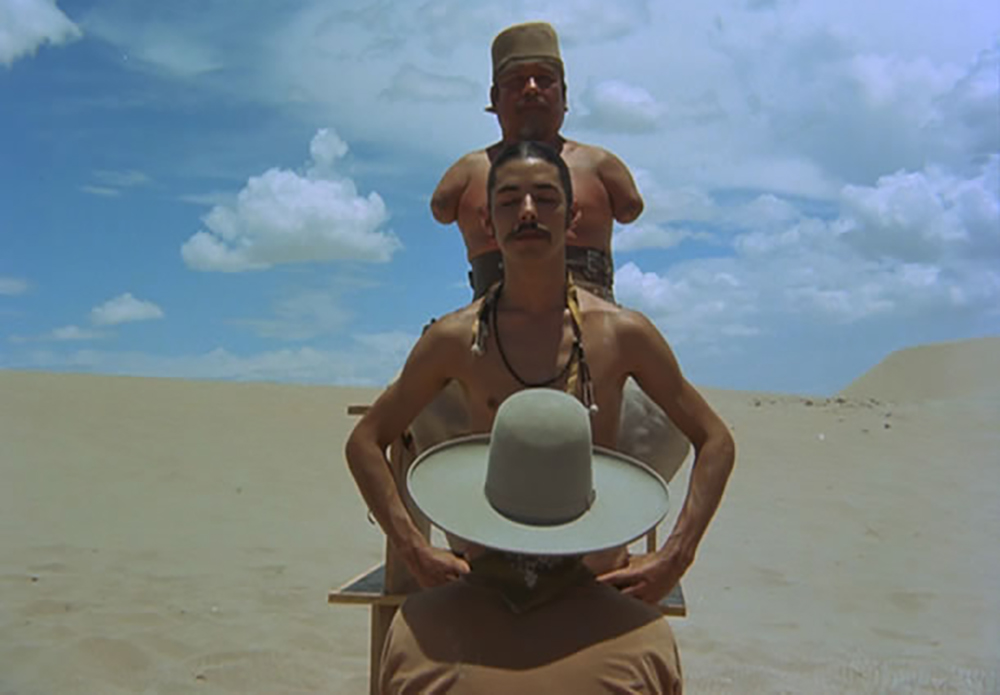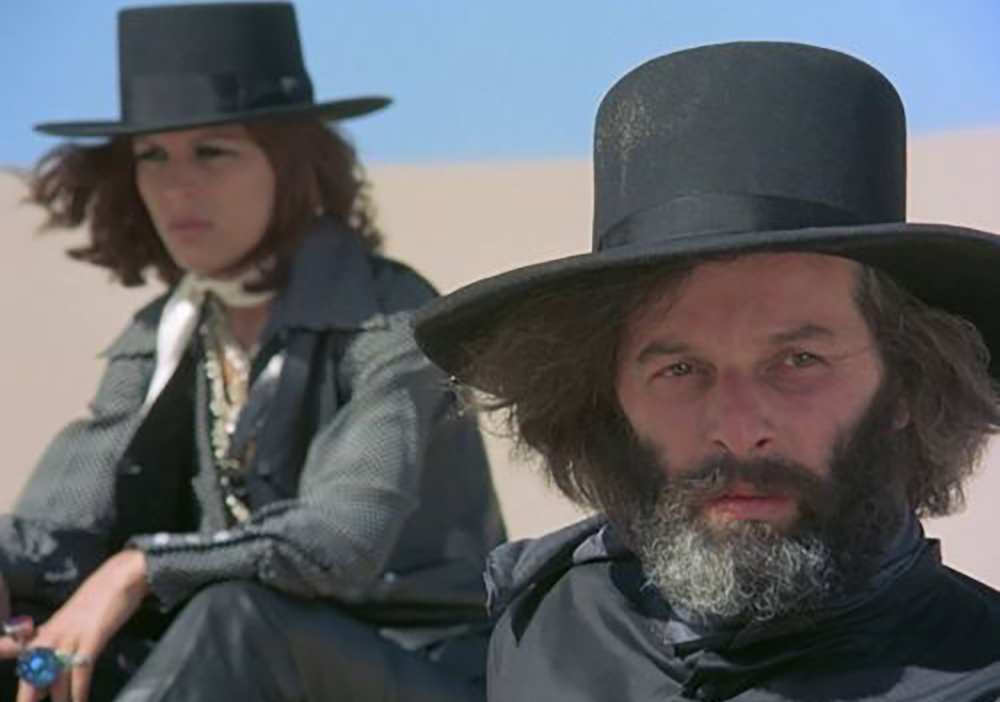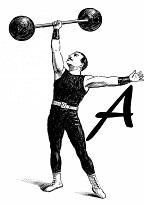El Topo is played by Alejandro Jodorowsky himself, and the naked boy is played by his actual son. When El Topo comes across a town whose people have all been brutally slaughtered, he decides to hunt down the perpetrators; this leads him on a journey to defeat the four great gun masters and become the greatest gunman in the land. Each of these gunmen represent a philosophy from which El Topo must learn from before his duels. The viewer comes to realize that El Topo himself represents his own philosophy. The story is simple, but it’s symbolism throughout creates a work of art one can think about and discuss for “days, months, years.” “El Topo” is self-aggrandizing and may be seen as a vanity project, but regardless it’s major impact on film history can not be ignored.
“El Topo” takes place in the wildest of wild wests. The location and time period are unconcerned, but this movie was shot in Mexico. It has the spaghetti Western look allowing it to fit into the genre perfectly. However, “El Topo” takes its visuals much more seriously than most Westerns. This is a film that plays with color; bright blue skies and fluorescent red blood are examples of the interesting use of color in the picture. The film puts its shots together expertly and thoughtfully. The prop and costume design also aids in the film’s extraordinary look.The wonderful framing, grandiose backgrounds, and unusual shot choices distract the viewer from the fact that the acting in the film is not expert. There isn’t much talking through the run-time though. The film realizes its ideas and plot points through fantastical visual means.
We must address the film’s rape scene. During original promotions for the film, Jodorowsky claimed that he had really raped the actor Mara Lorenzio on camera. He explains that the character is frigid until the rape, and this is true for the actor in reality as well. In the present day, he claims this is not true—however, the damage still remains. Establishing rape as a woman’s saving perpetuates an ever-pervasive rape culture. It feeds into sayings like “She just needs a good f#@*.”

In real life, men rape women to “fix” their “bitchiness.” “El Topo” says that method works and is beneficial to both men and women. It frames the male sexual organ as a benevolent object that even when forcefully received is a positive experience for women. This is both a symptom of rape culture and art that will go on to perpetuate it. Problematic does not even begin to describe this scene and the artistic ideas that go along with it.
This is a movie of the 1970s. However, that is a reason for this terrible depiction of rape, not an excuse. Using such a frame for rape in art is extremely tone-deaf to the lives and experiences of half of the hypothetical audience. However, it is not half of the film’s actual audience because this is a film by men for men. Advertising real rape on the Silver Screen is not something that attracts female movie-goers. Choosing a specific audience is not inherently a bad thing. However, the consistent alienation of female audiences through normalization of violence against women, hurts women in real life. This is not a jab at Jodorowsky, alone. Many male filmmakers have operated and continue to operate in this way.
“El Topo” is a unique art film that offers so much to learn from. Unfortunately, its depiction of women makes it inaccessible to many cinephiles. Despite this, I do still recommend this high art film to all film lovers as it is absolutely magnificent. For those who can not watch rape scenes, it is pretty obvious when it is about to happen. El Topo and Mara are in the desert and he unlaces his pants. It occurs around the 40 minute mark and does not last long. If you fast forward through it, you can still enjoy this avant-garde film and I beseech you to do so.
*You can watch “El Topo” via streaming on iTunes, Apple TV, and Amazon Prime.



5 Comments
I don’t know if I could enjoy a film, no matter how “high art”, if it promotes the idea of violence (especially rape) as being beneficial to women in any way. People can and do creat great art without hurting people or perpetuating harmful ideas and I think that art should be celebrated more. Let art that perpetuates harm fall to the wayside.
I have never seen this movie but now I need to watch it so I can see if it actually makes it seem like rape is beneficial for women.
I would need this movie broken down to me like a kindergarten.
Curious if it’s promoting rough sex? But you’ve seen it so I trust your word.
I’m one of the people that tend to separate a person’s personal life vs what they do for entertainment.
So I definitely need to watch this movie and research more about this guy.
Well worded and thought out review with a mature yet arbitrary attitude towards the rape scene. I don’t know if I could personally sit through a movie with such a theme but I’m glad to have read a woman’s thoughts on it
Great commentary Nace,
not a super big fan of westerns(its all wild wild west fault) or rape depicted in movies, but based on your review I do like the idea of growth through the gun masters, he’s coming across.
How do you think the alienation of female audiences has changed from the 1970s till now? IF there are any changes, what are some films or moves in the indutry that you think are key to that shift.
Hey Stephen,
I think from the perspective of these male filmmakers nothing much as changed. Using rape for the shock factor in art (because rape isn’t an issue that they feel pertains to their daily lives) has not changed. Women as audience members are an after thought, especially when it comes to high art films. We are not seen as part of the boy’s club that is the film world. Films by women are the key to that shift. Women portray themes with consideration for both male and female audiences because women live in a world where we’ve always had to consider men’s feelings. The female lense is an under-explored marvel in art and I know we will get to see more of it in the future!
Thank you for reading!
Nace